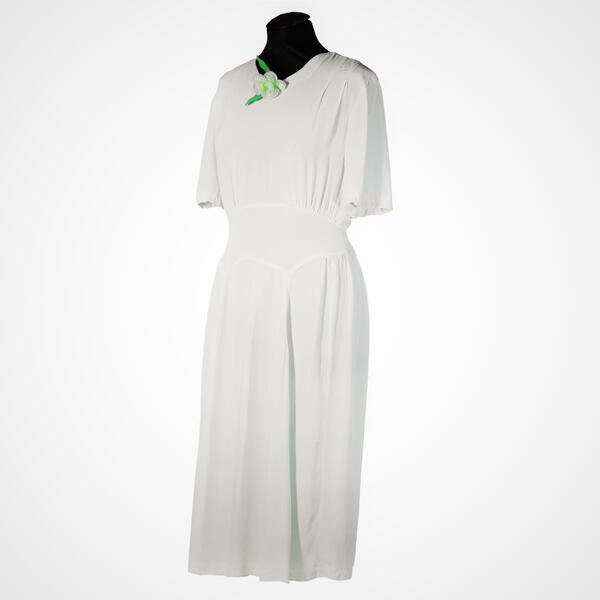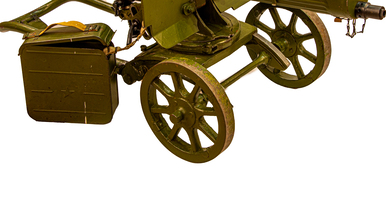The festive dress on display in the museum belonged to Vera Samokhvalova. She worked at the Kolomna Heavy Machine Tool Plant (ZTS). Her daughter Tatyana Bokova, the administrator of the Historical and Cultural Reserve Museum ‘Kolomna Kremlin’, donated the dress to the museum.
Women wore uniforms in a war environment like men because along with them they worked in the rear: they dug trenches, worked at military factories, dismantled rubble, and also fought at the front.
It was almost impossible to buy weekend clothes. There were few ready-made things on sale even where there was no occupation since the industry worked exclusively for the war.
The girls reshaped the preserved pre-war dresses for new fashionable styles or sewed new ones. Due to the lack of fabric, they were made shorter — up to the middle of the knee or slightly lower. If there was a choice, they preferred fabrics with a small pattern: it was easier to alter them so that the embroidery stitches were not visible. Dresses with wedges or inserts have become popular. You can see something like these on Samokhvalova’s outfit. Sometimes the inserts were made of any fabric of a different color.
In 1944, her relative from Moscow presented Vera Samokhvalova for her 18th birthday a piece of fabric for a dress. The girl first put it on in June 1945 — when the Victory in the Great Patriotic War was celebrated in the village club.
The dress of thin white fabric reaches below the knee. There was a belt on the waist. Vera Samokhvalova enriched the neckline with a decorative jasmine flower from the same fabric — it was fashionable at that time. She later recalled:
Women wore uniforms in a war environment like men because along with them they worked in the rear: they dug trenches, worked at military factories, dismantled rubble, and also fought at the front.
It was almost impossible to buy weekend clothes. There were few ready-made things on sale even where there was no occupation since the industry worked exclusively for the war.
The girls reshaped the preserved pre-war dresses for new fashionable styles or sewed new ones. Due to the lack of fabric, they were made shorter — up to the middle of the knee or slightly lower. If there was a choice, they preferred fabrics with a small pattern: it was easier to alter them so that the embroidery stitches were not visible. Dresses with wedges or inserts have become popular. You can see something like these on Samokhvalova’s outfit. Sometimes the inserts were made of any fabric of a different color.
In 1944, her relative from Moscow presented Vera Samokhvalova for her 18th birthday a piece of fabric for a dress. The girl first put it on in June 1945 — when the Victory in the Great Patriotic War was celebrated in the village club.
The dress of thin white fabric reaches below the knee. There was a belt on the waist. Vera Samokhvalova enriched the neckline with a decorative jasmine flower from the same fabric — it was fashionable at that time. She later recalled:



